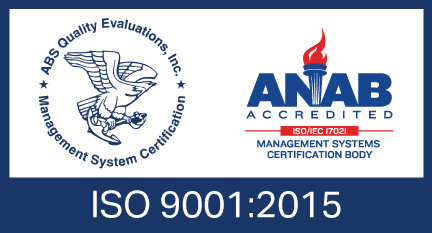Technology (connectivity, digitization, and the cloud), strategy (market expansion), and circumstance (the pandemic) are driving the growth of the eLearning industry. In turn, organizations can:
- better engage current and prospective employees and customers
- successfully enter into new (especially cross-border) markets
- gain a competitive advantage
eLearning programs are vastly different than they were just a few years ago. Embracing these new platforms means less travel, fewer crowded convention halls, and no more sitting through long days of training. Cloud-based platforms mean companies can onboard and both re-skill and up-skill employees without concerns about location or borders.
There still are challenges when using eLearning platforms, however, such as language barriers, time zone differences, and cultural nuances. But, if you approach these hurdles thoughtfully and programmatically, you can turn them into strategic opportunities.
Challenges and Solutions
Localization
- Challenge: Language translation and cultural appropriateness present the top two localization challenges. Translations, of course, are required across all your eLearning platforms. Local cultures? You need to both understand them and successfully convey that understanding to your audience. This includes dialects, idioms, slang, jargon, and other language norms.
- Solution: Two words—brief and simple. The less complicated your learning platform, the less likely you will inadvertently include some culturally offensive material or muddy your message, leaving your audience with little to no understanding or retention of the material or your message.
Consistency of Message
- Challenge: When localizing your content, you want your key messaging to touch and resonate similarly with consumers in all markets. Also, don’t forget about the impact of graphics, where color alone can cause confusion or offense if you’re not careful. For example, in China, red symbolizes “happiness, good fortune, luck, and prosperity.” In South Africa, red is associated with mourning. Yellow, on the other hand, symbolizes gentleness, spontaneity, and even greed and duplicity in Western cultures, like the U.S., Canada, and Europe. In Polynesia, however, yellow is “considered to be the color of divine essence.”
- Solution: When designing your eLearning courses, make sure that your visual elements are aligned with your target cultures. Choose appropriate colors to convey your message without adding confusion or offense. Also, confirm that your graphics layout, such as images and navigation buttons, aligns with the translated language, as some languages use more words than others to convey the same message. Accounting for these details not only refines your message, keeping it consistent across borders but makes for a more positive user experience.
Technology and Digital Infrastructure
- Challenge: Yes, you have to plan ahead when preparing content for use in different languages, dialects, and cultures. You also need to consider and understand the available and accessible technology and digital infrastructures for the delivery of your global content. Urban, rural, developed, or developing regions can have very different technology and digital infrastructures. Some areas have low bandwidth and spotty internet, while others may have inconsistent availability of electricity.
- Solution: This may require clever workarounds and expertise. Choose your technological solutions carefully and ensure you understand which ones work practically in different regions. Know which technologies interface with one another effectively and which ones have modular and agile options, allowing you to adapt to the needs of global learners. Identify and use technology that can shift between cultures and infrastructures. This not only solves these challenges, it also saves you time, money, and frustration.
Cost-Containment
- Challenge: eLearning reduces expenses on one side of the ledger. With no travel, hotels, convention centers, and time out of the workplace, learners (and their employers) can significantly reduce training costs. Programs and curricula still need to be developed, however. What about expenses for global eLearning development? Expenses can quickly add up when localizing language and content, scaling eLearning courses, and remaining compliant with various requirements and regulations.
- Solution: Invest time and effort to understand—and then manage—the features of your eLearning system. For example, are you using a commercial learning management system (LMS)? Or have you accessed an open-source LMS? Does your system allow you to scale or customize? Can it generate reports or track performance? What are the upfront costs and implementation processes? Understand your eLearning platform and its options and capabilities, and you can better align your costs with your goals for your global content.
Compliance and Risk Management
- Challenge: A more connected world means additional compliance is required. From local or regional laws to international standards on privacy, data security, and IT governance, staying on top of global eLearning compliance is critical to the ongoing viability and success of your eLearning platform. For example, one legal requirement that may apply to your eLearning platform is the General Data Protection Regulation (GDPR), a strict global law on privacy and data security. Passed by the European Union (EU), the law impacts any collected data related to those who live and work in the EU. Since the GDPR passed in 2018, other countries have imposed additional privacy and data security laws that may impact your global eLearning platforms, such as India’s Personal Data Protection Bill and Canada’s Consumer Privacy Protection Act.
- Solution: Devote time and resources in the program-development phase to understanding global, regional, and local laws, regulations, and standards. Engage with skilled professionals that will help you stay current and will notify you of international laws around access, privacy, and security practices. Finally, develop internal standards and best practices, ensuring that your global eLearning system is consistently updated.
Turn Challenges Into Opportunities
You can turn obstacles into opportunities with upfront planning and organization. Sound execution, in turn, helps you capitalize on those opportunities. You can extend your brand internationally, engage your employees, and do it in a financially prudent manner while strengthening your competitive edge in the marketplace.
Next Steps
Partnering with an experienced language service provider (LSP) will optimize your results by helping you overcome challenges, allowing you to capitalize on barriers while giving you a competitive edge.
SECURE. UNIFIED. EFFECTIVE. Our family of companies includes BIG IP, ISI Language Solutions, Protranslating, Language Link, and DWL, bringing a combined 150 years of expertise with offices in 26 cities worldwide. Through our portfolio, we customize and deliver language services in more than 240 languages and dialects.
Have questions on how an LSP can benefit your organization? Give us a call today.








